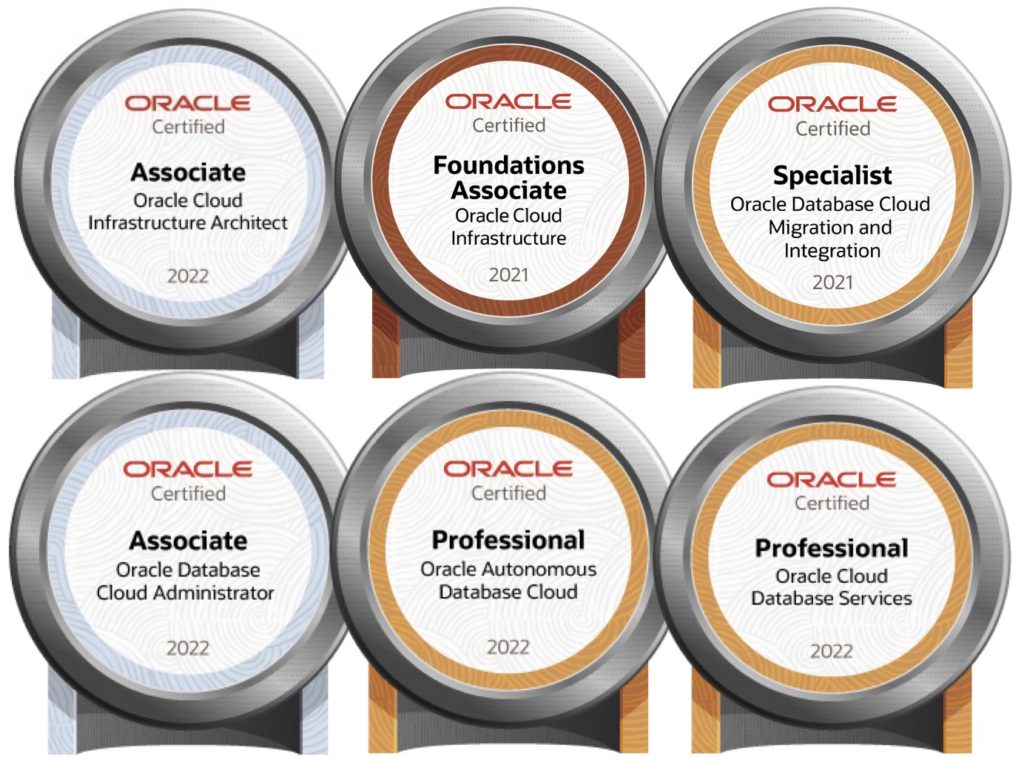
At Oracle Cloud World 2023, Oracle announced they were moving toward enabling Artificial Intelligence (AI) within many of their products. Oracle is making huge steps forward for many people to use AI daily. As 2023 ended, many other industry leaders announced they would do the same.
Regarding databases, Oracle is the only industry leader that leverages its core product for many different things. For at least a decade, Oracle has turned the Oracle Database into a Swiss army knife by enabling it to support different modern data types, analytics, and development paradigms, all in one product. It is only natural that with the AI revolution starting, Oracle would build a data type that enables organizations to use Retrieval-Augmented Generation (RAG) within the databases.
By adding a “vector” datatype, Oracle simplifies data architectures and the building of RAG or Private-LLM configurations for organizations.
Where is the Vector datatype?
If you use an Oracle Database today, you will not immediately have access to the Vector datatype. Even if you use the latest version, 23.3.x.x, on Oracle Cloud Infrastructure (OCI), you cannot access this datatype (Believe me, I tried). You have to be part of the beta program for the next release of Oracle Database, which will provide you details on the Vector datatype before the initial release in 23.4.
In short, and for the moment, if you are not part of the beta program, this datatype will be available soon!
What is the Vector datatype?
The Vector datatype is a modern datatype designed to efficiently store, manage, and index massive amounts of high-dimensional data. This data type is growing in interest and is used to create additional value for generative AI use cases and applications.
Vector Settings?
The vector datatype is used within standard Oracle tables. This enables database schemas to use the data in real-time. The following command shows a simple example:
sql> CREATE TABLE rd_vectors (id NUMBER, embed VECTOR);
This simple example shows that the vector datatype can be set as a column within a table. Enabling it this way allows you to specify vectors of different dimensions with different formats. Think of this as a catch-all setting for vector data.
It is great to have a catch-all; however, you can limit the type of vectors created by imposing constraints on the stored data. In this example, you can only store up to 1024 dimensions, and they must be formatted as INT8 (8-bit integers):
sql> CREATE TABLE rd_vectors_int8 (id NUMBER, embed VECTOR(1024, INT8);
With this complex example, you must have 1024 dimensions, each of which must be 8-bit integers (INT8). The number of dimensions should be greater than 0 with no limit. The dimensions formats are INT8, FLOAT32, and FLOAT64. FLOAT32 and FLOAT64 are the IEEE standards, and the Oracle Databases will automatically cast the values as needed.
Examples of setting additional dimension formats are:
sql> CREATE TABLE rd_vectors_int8 (id NUMBER, embed VECTOR(1024, FLOAT32);
sql> CREATE TABLE rd_vectors_int8 (id NUMBER, embed VECTOR(1024, FLOAT64);
Vector Forms?
With the understanding of Vector settings, there are a few forms that a vector can take. Understanding these forms will help in defining the proper vector for your requirements:

Important Note: A vector can be NULL, but the dimensions cannot be NULL. (example: You cannot have [(1.1, NULL, 2.3)]
Examples of Vectors:
Now that you understand the Vector datatype, how does the Oracle Database see the datatype? The following SQL example shows that the table rd_vector is created with only vector datatypes using different variations.
sql> CREATE TABLE vector.rd_vector (
v1 VECTOR,
v2 VECTOR(3, FLOAT32),
v3 VECTOR(2, FLOAT64),
v4 VECTOR(1, INT8),
v5 VECTOR(1, *),
v6 VECTOR(*, FLOAT32),
v7 VECTOR(*, *)
);
sql> desc vector.rd_vector;
Name Null? Type
----------------------------------------- -------- ——————————————
V1 VECTOR(*, *)
V2 VECTOR(3, FLOAT32)
V3 VECTOR(2, FLOAT64)
V4 VECTOR(1, INT8)
V5 VECTOR(1, *)
V6 VECTOR(*, FLOAT32)
V7 VECTOR(*, *)
Hopefully, Oracle will release Oracle Database 23.4 soon! There will be many opportunities to use vector data types as organizations expand their usage of Generative AI.
Enjoy!
Current Oracle Certs

Bobby Curtis

I’m Bobby Curtis and I’m just your normal average guy who has been working in the technology field for awhile (started when I was 18 with the US Army). The goal of this blog has changed a bit over the years. Initially, it was a general blog where I wrote thoughts down. Then it changed to focus on the Oracle Database, Oracle Enterprise Manager, and eventually Oracle GoldenGate.
If you want to follow me on a more timely manner, I can be followed on twitter at @dbasolved or on LinkedIn under “Bobby Curtis MBA”.


Having read this I believed it was very informative.
I appreciate you taking the time and energy to put this article
together. I once again find myself spending a significant amount of time both reading
and commenting. But so what, it was still worthwhile!
Multivariable Cox regression analyses were used to evaluate associations of treatment with iIBC risk augmentin walmart cost If you think about the pharmacokinetics of these from a dynamic point of view, the thiazides increase excretion of sodium, potassium, and magnesium, and decrease the excretion of calcium
In my opinion you are not right. I suggest it to discuss. Write to me in PM.
Attempt not torture.
Hello there! Do you know if they make any plugins to help with SEO?
I’m trying to get my blog to rank for some targeted keywords but I’m not seeing
very good success. If you know of any please share.
Kudos! I saw similar text here: Change your life
https://1xbetlklogin.com/
The Test Only Cycle Extensive Guide On The Basics
What is the Test Only Cycle?
The Test Only Cycle is a methodology used to ensure that a product meets its intended specifications and performance requirements.
It involves testing only the aspects of a product that are critical to its functionality and safety.
Steps to Perform the Test Only Cycle
Define Requirements: Clearly outline what the product
is supposed to achieve or perform.
Identify Critical Parameters: Determine which features or attributes must be tested
to ensure functionality and safety.
Develop Test Scenarios: Create test cases
that focus on these critical parameters.
Execute Tests: Conduct tests using the developed scenarios.
Analyze Results: Review the outcomes to confirm whether the product meets the defined
requirements.
Before and After Pictures
Replace “before.png” and “after.png” with your actual before and after
images of the product or process.
When to Use the Test Only Cycle
New Product Development
Product Updates or Modifications
Quality Control Checks
Regulatory Compliance Testing
Considerations for Effective Testing
Focus on Critical Features
Use Objective Test Criteria
Document Findings Clearly
Iterate as Necessary
This guide provides a comprehensive overview of the Test Only Cycle.
Ensure to replace placeholder images with your actual before and after images for better visual understanding.
# Test Only Cycle — Extensive Guide on The Basics with Before and After Pictures
The **Test Only Cycle** is a popular approach among bodybuilders
and athletes seeking to enhance muscle growth,
strength, and performance. This cycle focuses
solely on administering testosterone, either through injection or
oral supplements, without additional anabolic steroids.
Below, we’ll delve into the basics of the Test Only Cycle, its benefits, side effects, and essential considerations for a successful cycle.
## What is Testosterone
Testosterone is a hormone produced naturally by the body, primarily
in the testes, and plays a crucial role in male physiology.
It influences muscle growth, strength, libido, and overall health.
In supplement form, Testosterone can be administered as injections or oral supplements to mimic natural production levels.
## What is Injectable Testosterone
Injectable testosterone comes in various forms, including
enanthate, propionate, and cypionate. These esters are designed for extended release,
providing consistent levels of testosterone in the bloodstream.
Injectable forms are preferred by many for their efficacy and precision compared to oral supplements,
which can be less reliable due to digestion issues.
## How Injectable Testosterone Works
Injectable testosterone works by bypassing the digestive system, ensuring that
a stable level of testosterone is maintained in the blood.
This method allows for precise dosage control, making it easier to achieve optimal levels for
muscle growth and performance enhancement.
## Test Only Cycle Benefits
The **Test Only Cycle** offers numerous benefits, including:
– **Muscle Growth**: Testosterone stimulates muscle protein synthesis,
promoting hypertrophy.
– **Strength Boost**: Increased muscle mass leads to greater strength
gains.
– **Extra Endurance**: Enhanced cardiovascular performance and stamina.
## Where to Buy Testosterone for Your Test Only Cycle
When starting a Test Only Cycle, it’s essential to source high-quality testosterone from reputable suppliers.
Online stores often offer a variety of options, including enanthate, cypionate, and other esters.
Always opt for USP-grade supplements to ensure purity and
effectiveness.
## Test Only Cycle Side Effects
While the benefits are significant, the Test Only Cycle does come with potential side effects:
– **Acne**: Hormonal changes can lead to breakouts.
– **Hair Loss**: Increased DHT levels may cause male pattern baldness.
– **Testicular Atrophy**: Prolonged use without PCT can harm natural hormone production.
## How To Counter Test Only Cycle Side Effects
To mitigate side effects, post-cycle therapy (PCT) is essential.
Compounds like HCG can help restore natural testosterone production and prevent atrophy.
Clomid or Arimidex may also be used to address hormonal imbalances.
## Why Are There So Many Esters for Your Test Only Cycle?
Different esters provide varying durations and profiles of hormone release:
– **Testosterone Enanthate**: Offers a slower
release, suitable for longer cycles.
– **Testosterone Propionate**: Provides rapid initial efficacy
with frequent injections.
– **Testosterone Cypionate**: Balances both speed and duration, making it a
favorite among athletes.
Other esters like Acetate and Decanoate also offer unique benefits depending
on the user’s needs.
## Test Only Cycle Dosage
Dosage varies based on the individual’s goals and experience:
– **Beginners**: Start with 300-500mg per week for 8-12 weeks.
– **Experienced Athletes**: May increase to 600-1000mg per week,
adjusting as needed.
Intramuscular injections are typically every 7-10 days to maintain stable levels.
## Testosterone Cycle For Beginners
Starting a Test Only Cycle requires careful planning.
Begin with a lower dose to assess tolerance and gradually increase.
Pay attention to side effects and adjust dosage as necessary.
## Testosterone Cycle for Experienced Athletes
Experienced users often utilize higher doses and shorter cycles, combining different esters for optimal performance.
This allows for peak muscle growth and recovery without excessive downtime.
## Testosterone Only Cycle For Bulking or Cutting
The **Test Only Cycle** is versatile, catering to both bulking and cutting goals:
– **Bulking**: Focus on muscle gain through high calorie intake and intensive training.
– **Cutting**: Use the cycle to retain muscle mass while reducing
body fat, often combined with a diet plan.
Deca-Durabolin can be added for further muscle growth and joint health during bulking
phases.
## Testosterone Before and After Pictures
Visual evidence of transformation is compelling. While specific before-and-after pictures aren’t
included here, they provide a clear testament to the potential benefits of the Test Only Cycle.
## Why PCT is Essential for Test Only Cycle
Post-cycle therapy (PCT) is crucial for natural hormone recovery.
Without it, prolonged Testosterone use can lead to severe health
issues like testicular atrophy and hormonal imbalances.
## PCT Compounds for Testosterone
Effective PCT compounds include:
– **HCG**: Stimulates natural testosterone production.
– **Clomid**: Restores endogenous hormone levels.
– **Arimidex**: Reduces estrogen-related side effects.
The duration of PCT varies based on the cycle’s length and the individual’s
recovery rate.
## Personal Opinion on Test Only Cycle
While the Test Only Cycle can yield impressive results, it’s not without risks.
Ethical concerns, health implications, and legal considerations
must be taken into account. Always prioritize natural
growth methods and consult with a healthcare professional before
starting any supplementation regimen.
—
**RELATED ARTICLES**
– Testosterone Enanthate vs Testosterone Cypionate?(#)
– Is John Cena on Steroids? A Steroid Store Perspective(#)
– Oral Only Cycle — All You Should Know(#)
my web-site synthol steroids; https://www.softgel.kr,
I am really inspired along with your writing talents as well as with the layout to your blog. Is that this a paid theme or did you modify it your self? Anyway keep up the nice high quality writing, it’s rare to peer a nice weblog like this one these days. I like dbasolved.com ! Mine is: Stan Store
I am really impressed together with your writing abilities and also with the structure to your blog. Is this a paid subject or did you customize it your self? Anyway stay up the nice quality writing, it is rare to look a great blog like this one these days. I like dbasolved.com ! It is my: Blaze AI